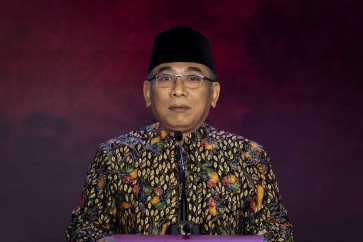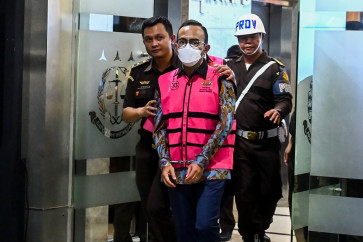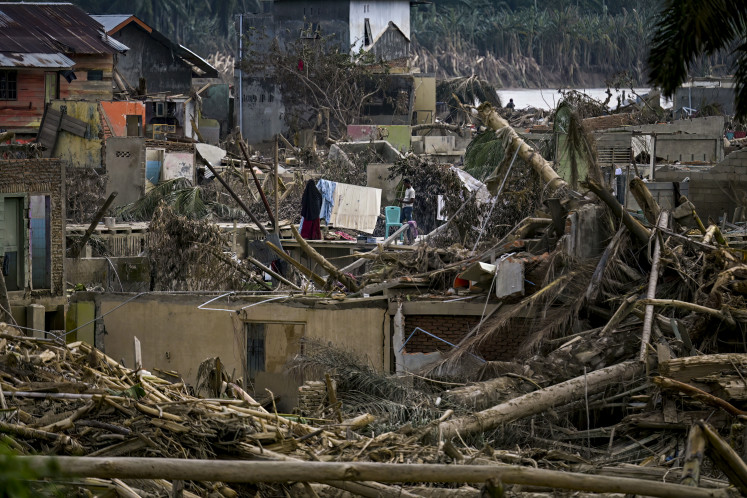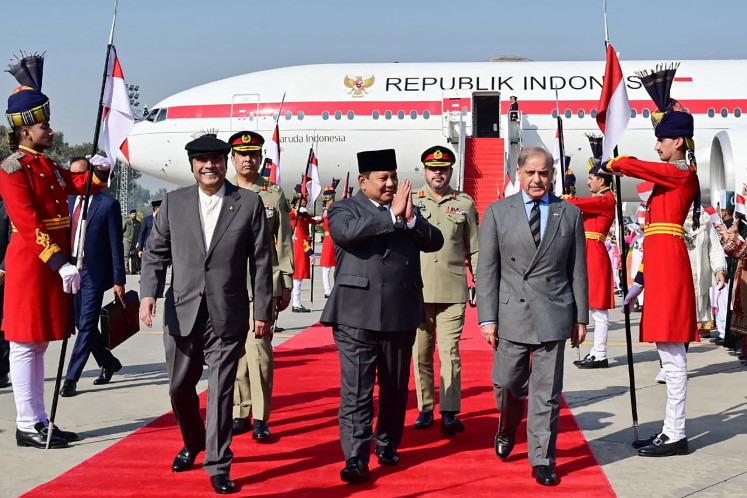Popular Reads
Top Results
Can't find what you're looking for?
View all search resultsPopular Reads
Top Results
Can't find what you're looking for?
View all search resultsRegency studies effects of gemstone rush on environment
Extensive gemstone excavation along the Klawing River in Purbalingga regency, Central Java, may be harming the environment, prompting the local government to carry out an in-depth study of the environmental hazards
Change text size
Gift Premium Articles
to Anyone
E
xtensive gemstone excavation along the Klawing River in Purbalingga regency, Central Java, may be harming the environment, prompting the local government to carry out an in-depth study of the environmental hazards.
With the gemstone business booming across the archipelago, the Purbalingga administration will conduct a comprehensive study that will shed light on the risks of gemstone excavation along the Klawing River, which is a major site of digging.
'We will work together with the Energy and Mineral Resources Ministry to conduct a geological study,' Purbalingga Public Works Agency head Sigit Subroto said earlier this week.
He said the study would help identify ways to mitigate the environmental harms while supporting the growing industry.
Sigit added that in addition to supervising excavation, the study would also help formulate a strategy for providing geologic data, counseling, facilities and technology on processing the stones to the local community.
'The study is aimed at further understanding the potential of the Klawing stones in Purbalingga, as well as identifying a solution for creating development that can boost people's welfare,' said Sigit.
He added his office had requested Rp 500 million (US$38,910) from the state budget, Rp 200 million of which would be used for geological study, Rp 50 million for public counseling and Rp 50 million for supervising gemstone excavation.
'As much as Rp 150 million of the funds will be used for gemstone-processing technology. The funds will come from the 2015 state budget,' said Sigit.
Klawing gemstone miners and processors are currently only able to process the stones in their raw form. They are then sold outside the regency at cheap rates.
'The lack of technology for exploiting the stones is a lost benefit,' said Sigit.
Purbalingga Regent Sukento Ridho said gemstone excavation had long been a driver of the local economy, but on a much smaller scale.
'They [gemstone businesspersons] have existed for a long time, but around three months ago, business began rapidly growing after a surge in demand from various regions in the country,' said Sukento.
Many more locals are now involved in either the hunting or the processing of the stones. Processing, Sukento said, included cutting and polishing.
'They not only sell the stones in Purbalingga, but also in major cities like Jakarta, Surabaya, Bandung and outside Java as well,' Sukento said.
Following the boom in demand, what were once 300 or so gemstone craftsmen has ballooned to 1,500.
The Klawing gemstones, which include Jasper Nogo Suwi, Jasper Pancawarna, and multilayer-Jasper, are popular due to their abundant supply and variation in color and pattern.
They are concentrated in the Klawing river-flow area, especially in the hilly areas north of Purbalingga that bleed into the North Serayu mountains.










